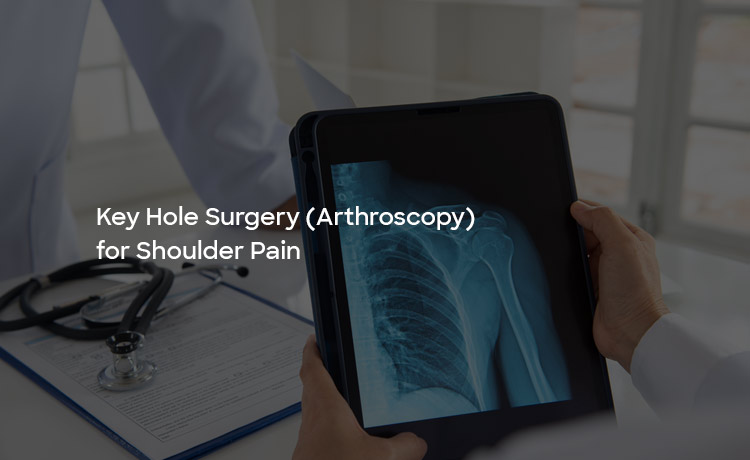
Shoulder pain is a common problem and there are a number of reasons why you might be experiencing it. Shoulder arthroscopy, a type of keyhole surgery used both to diagnose and treat problems in this joint, is considered to be the most useful way to treat shoulder problems. The procedure has some significant advantages over traditional, open surgery such as less tissue damage, less pain, faster healing time and lower risk of infection.
Some common shoulder conditions treated by Arthroscopy
Frozen shoulder (Stiff shoulder): A painful condition that reduces normal movement in the joint and can sometimes prevent movement in the shoulder. It is common in diabetics.
Rotator cuff disorders:The rotator cuff degenerate with age, and can be easily torn. It is one of the most common causes of shoulder pain in middle aged adults and older individuals. It may occur with repeated use of arm for overhead activities causing severe pain, weakness of the arm in certain positions. In arthroscopy procedure space for rotator cuff tendons will be increased and the cuff tear is repaired using suture anchors to shoulder bone
Impingement: In shoulder impingement syndrome, the muscle tendon becomes trapped between two bones and repeatedly scrapes against the bone above, causing pain. This happens due to bone growth, thickening of the tendon or inflammation of fluid filled sac (bursitis). Arthroscopic surgery Acromioplasty, also known as subacromial decompression, is sometimes done to treat pinched tissues in the shoulder by increasing the space for the tendon to glide freely on shoulder movements.
Shoulder instability: Ligaments of the shoulder joint can be damaged due to injury or laxity causing pain and restricted movements. If this occurs repeatedly, especially in young people, arthroscopic procedures are available to stabilise the joint, depending on the causes and findings on investigations.
Calcific tendonitis: Refers to a deposition of calcium in the muscle tendons causing a buildup of pressure in the tendon causing a chemical irritation and pain. If the pain is severe and uncontrolled, the calcium deposits is removed arthroscopically while also increasing the amount of space for free shoulder movements.